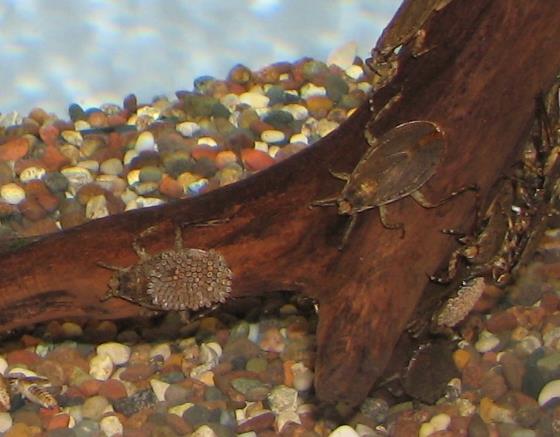Ferocious water bug
Abedus herberti
Order: Hemiptera
Family: Belostomatidae
Genus: Abedus
The Ferocious Water Bug is a sizable aquatic insect, typically measuring between 2.3 and 4 centimeters (0.9–1.6 inches) in length. It has a flattened, oval-shaped body with a brownish coloration, aiding in camouflage within its habitat. Notably, males carry eggs on their backs until they hatch, a unique form of parental care among insects.
HEAD AND BODY LENGTH: 2.3 to 4 centimeters (0.9–1.6 inches)
HEIGHT AT SHOULDER: Not applicable to insects
TAIL LENGTH: Lacks a distinct tail; the body tapers towards the end
WEIGHT: Data on weight is limited, but they are relatively lightweight due to their small size
Conservation Status: IUCN

Distribution
Found in freshwater environments across the southwestern United States and northern regions of Mexico.
Habitat
Prefers slow-moving or still freshwater bodies like ponds, streams, and marshes with abundant vegetation.
Diet
Carnivorous, preying on various aquatic organisms, including insects, tadpoles, and small fish. It uses its powerful front legs to grasp prey and a piercing mouthpart to inject digestive enzymes, subsequently consuming the liquefied tissues.
Reproduction
Exhibits a unique reproductive behavior where the female lays eggs on the male's back. The male then carries and cares for the eggs until they hatch, ensuring their protection and proper development.
Adaptation
Demonstrates several adaptations for aquatic life, including a streamlined body for efficient swimming, strong front legs for capturing prey, and the ability to store air beneath its wings, allowing it to breathe underwater.
Threats to Survival
Potential threats include habitat loss due to water pollution, drainage of wetlands, and water diversion for agriculture or urban development. Despite these challenges, the species currently maintains stable populations in its native range.














